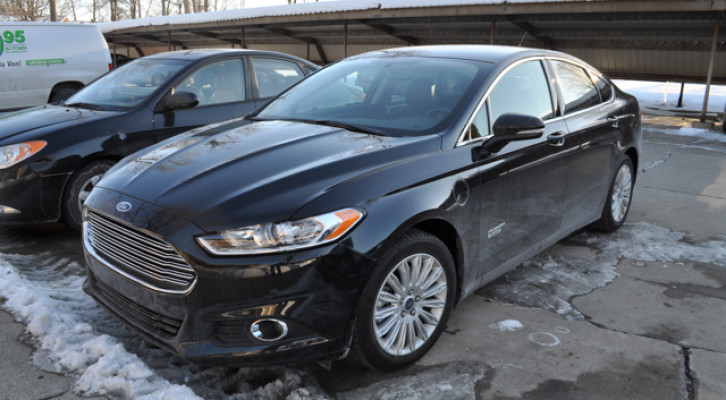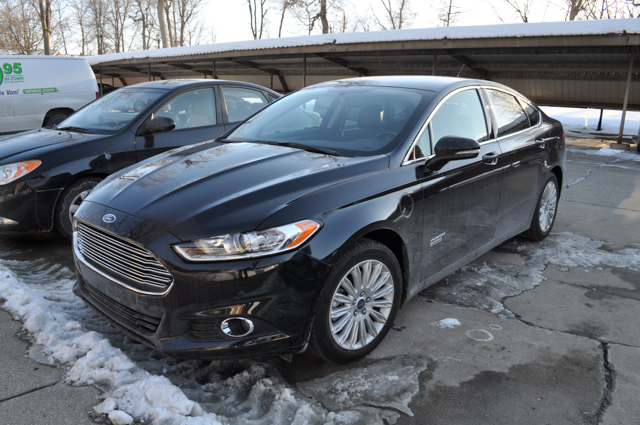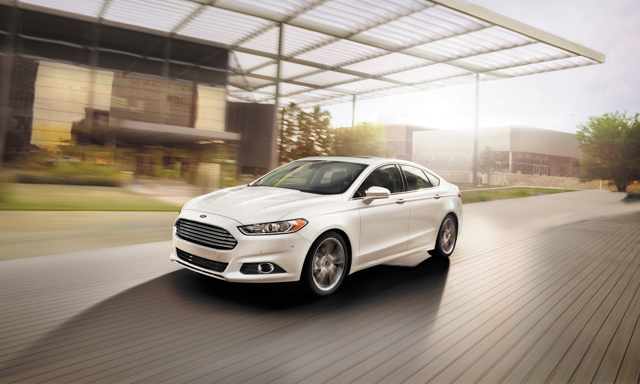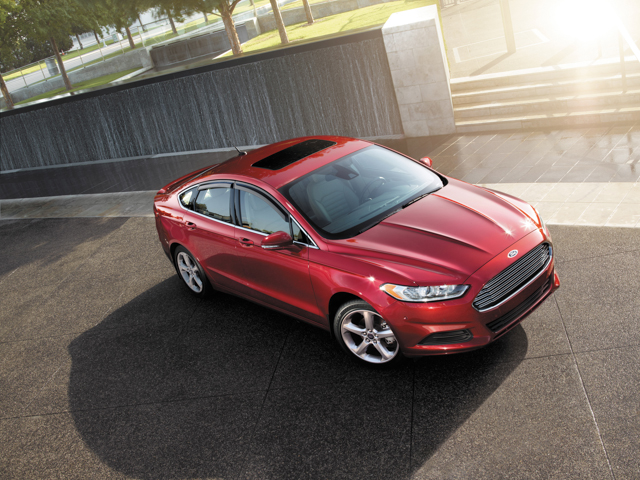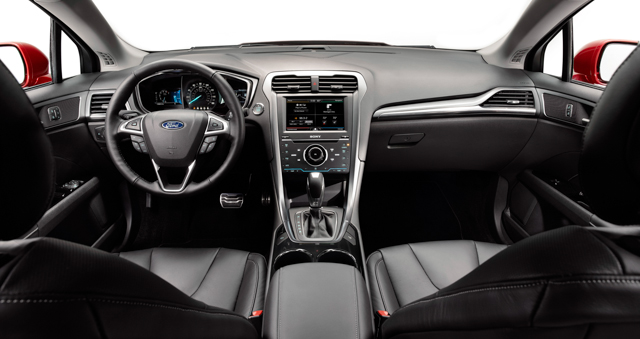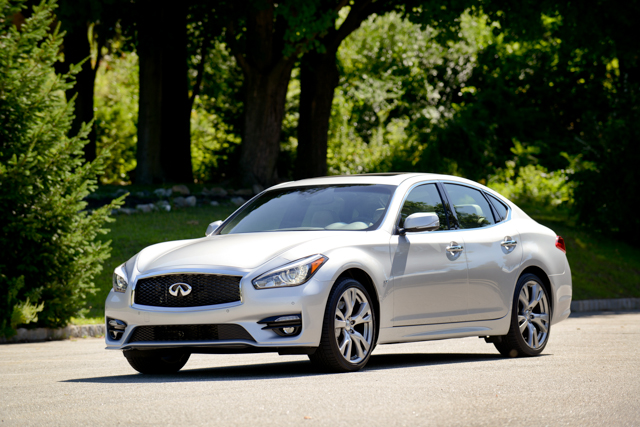I came home out of the optimism, SoCal rockstar weather and paradigm-breaking of the Kia K900 to a snowy and overcast Detroit, and to the Ford Fusion Energi. The Fusion Energi is last year’s groundbreaking hero, now just settling down into the role of maintaining a mainstream sort of awesomeness. It’s amazing that a plug-in hybrid that’s pulling upwards of 40mpg when it’s not running on full-electric power can be so nonchalant about it, in fact. Almost nobody who rode in the Fusion Energi was immediately aware of the efficiency tricks that the car was up to unless I told them.
And that’s how it has to be. Breaking new ground and forging uncharted paths is important, but at some point you’ve got to settle down and make it all work, too. The Fusion Energi has done that well. It hit the streets in 2013, part of a veritable deluge of high-efficiency Fords along with the Focus Electric, upgraded Fusion and MKZ Hybrids, the hybrid-only C-Max and the plug-in hybrid C-Max Energi. Like the C-Max that shares its suffix, the Fusion Hybrid Energi is a plug-in hybrid, with an electric motor assisting the gasoline engine and the ability to charge the battery by plugging in to a charging station (conventional hybrids use the engine to charge the battery).
Hybrid-electrics can be incredibly confusing (two-mode, single-mode, plug-in, battery-electric vehicle, range-extended EV, and so on…and yes, a battery-electric vehicle isn’t technically a hybrid but you get my point, hopefully), so think of the Fusion Energi as a challenger to the Chevrolet Volt (even though their final-drive propulsion modes are different) and you won’t be far from the truth. At ground level, they’re rivals. Both cars are everyday-usable family sedans that rely heavily on electric power, and cost about $40,000.
A $40,000 Fusion may seem like a lot to stomach at first, but there’s the Fusion Energi’s economy to consider. The “MPGe” ratings for modern electrics are confusing; what’s important is that the Fusion Energi has enough range to commute for a week without refueling. This car also justifies its bottom line with a lot of value-added features, from the SYNC with MyFord Touch (if you like MyFord Touch that is…my fingers don’t get along with touchscreens, so I find it a little maddening to use) to the capless fuel filler to the standard leather interior, available park assist and modern interior. “This is a Fusion?” is a comment I heard more than once during the week.
With an electric assist, the gas engine can be smaller; that’s the point of hybrids, after all. The Fusion Energi uses a 2.0 liter four-cylinder connected to a permanent-magnet AC synchronous motor (in English, that’s pretty much the same type of electric motor that most hybrids use). Total output is 195 horsepower when the battery’s fully charged, and averages about 188. Around Detroit, plug-in hybrids aren’t at their best, since it’s easy to deplete the 35-or-so mile electric-only range with a freeway jaunt that’ll barely get you across our monstrously sprawling metropolitan area. (The Fusion Energi’s EPA rating is 21 miles on full electric, but Ford’s optimistic range gauge insists that it’ll go 35. Battery power was depleted after about 20 miles though.) Once the battery’s gone, the Fusion Energi’s gasoline engine kicks in. I missed the silent electric motor within ten miles; the gasoline engine is a droning, buzzing powerplant that’s designed for efficiency rather than smooth and silent operation. The CVT doesn’t help either, keeping the engine at a steady rpm that just seems to magnify the buzz. Taking advantage of the Fusion Energi’s 620-mile range (which would have gotten me to Chicago and back on a single tank of gas if I’d been lucky enough to have it last week) means listening to that engine a lot. Not a dealbreaker, but worth considering. Performance is not lacking, however. The Fusion Energi is happy to keep up with traffic and cruise at license-threatening speeds without feeling like it’s stretching its boundaries. Don’t expect it to grow any leaves for you at a sustained 85mph, though.
Leaves? Yeah, the Fusion Energi features Ford’s SmartGauge with EcoGuide (Ford does love its convoluted names) instrument panel, which has a rather twee eco-guide in the form of a little animated bush that shows more or less leaves depending on how efficiently you’re driving. Yeah, I pretty much ignored it. The SmartGauge’s reconfigurable dual 4.2-inch LCD screens will display a range of very specific fuel economy information, for those who want the engineering details on the fly. Like many electrics, the Fusion Energi is set up to become deeply involved with your smartphone and your life. The navigation system will remember frequent destinations and calculate the most efficient ways to get there, maximizing EV time. Charging time and trip planning can also be done via phone.
The Fusion is one of the more tossable family sedans out there, and the big lithium-ion battery pack under the floor doesn’t change that. Out on the road, I wasn’t able to resist the charms of the Fusion’s responsive chassis for long. The setup is reasonably conventional—MacPherson struts up front and a multi-link rear—but this car is happy to play a bit. At speed, the Fusion Energi feels more like a sporty family sedan than a hypermiler.
Of course, part of the reason it feels like a sporty family sedan is because it is one. The Fusion shares Ford’s family styling, with lots of horizontal grille bars and a trapezoidal grille that’s probably supposed to give it a resemblance to the Mustang, though you’ve got to squint hard to see it. The Fusion’s a good-looking vehicle, especially if you like your sedans to have dramatically sloped greenhouses. The only thing distinguishing the Fusion Energi from the conventional model is the LED-ringed charging port, which lights up blue when the car is plugged in. It’s the opposite approach taken by the ultra-modern Volt; the Fusion Energi blends in with the rest of the lineup rather than standing out. Ford’s always done this with its hybrids. Stylistically, it’s easy to overlook the Fusion Energi.
So, is that a good thing or a bad one? I couldn’t decide. The Fusion Energi offers distinct economy advantages over the conventional model, but without much of a style tweak there’s not much on the surface to justify the price walk. This is a car whose most important points are hidden beneath the surface. I can be okay with that, and based on the Fusion Energi’s success thus far, I’m not the only one.

